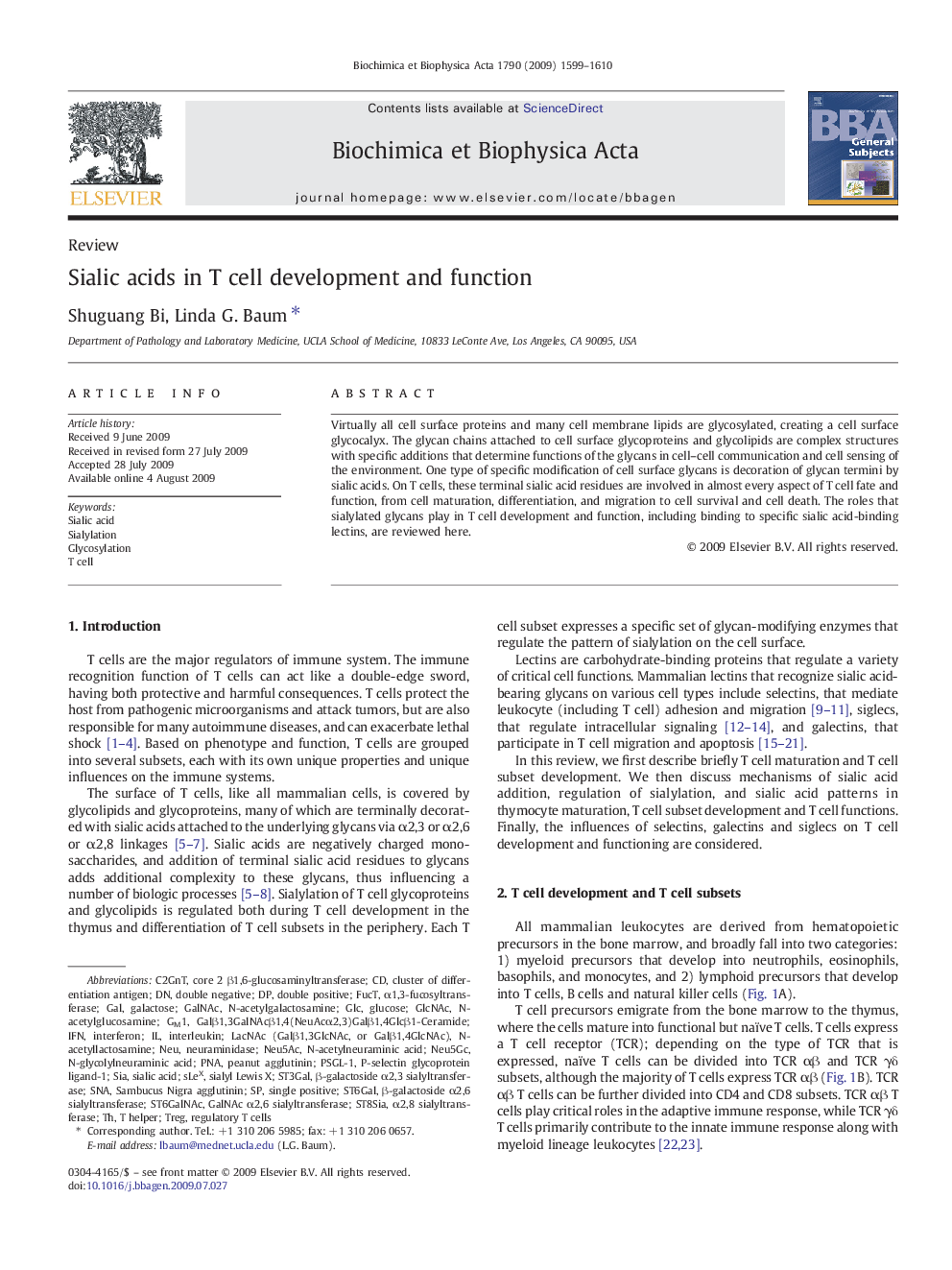| Article ID | Journal | Published Year | Pages | File Type |
|---|---|---|---|---|
| 1948205 | Biochimica et Biophysica Acta (BBA) - General Subjects | 2009 | 12 Pages |
Virtually all cell surface proteins and many cell membrane lipids are glycosylated, creating a cell surface glycocalyx. The glycan chains attached to cell surface glycoproteins and glycolipids are complex structures with specific additions that determine functions of the glycans in cell–cell communication and cell sensing of the environment. One type of specific modification of cell surface glycans is decoration of glycan termini by sialic acids. On T cells, these terminal sialic acid residues are involved in almost every aspect of T cell fate and function, from cell maturation, differentiation, and migration to cell survival and cell death. The roles that sialylated glycans play in T cell development and function, including binding to specific sialic acid-binding lectins, are reviewed here.
